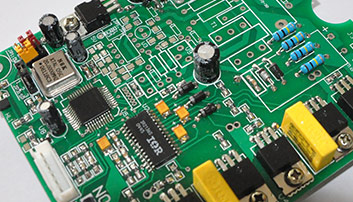Capturing the schematic is an essential part of the circuit design process and it is essential for any PCB design. There are many tools available for this.
 Drawing the circuit and capturing the circuit as a schematic on a computer is an essential part of the circuit design process.
Drawing the circuit and capturing the circuit as a schematic on a computer is an essential part of the circuit design process.
Although it is still possible to draw circuits manually, either using stencils, etc or freehand, these days most circuits or schematic diagrams are captured on a computer. There are very many circuit schematic capture programmes that are available, either as stand alone items, or as part of a PCB design package.
It is essential that if an electronic circuit is to be transferred to a PCB using a computer programme, then the circuit is captured in a form that can be entered into the PCB design programme.
Typically a PCB development programme will include a schematic capture facility and the components used are linked to shapes for the PCB and also they can normally be itemised later as a Bill of Materials or BOM which can be linked to system that buys the components.
Some component distributors even offer basic PCB development programmes that link into their component data bases and enable costing and availability to be determined.
PCBWay.com not only makes your boards quickly, but also makes your job right correctly as well as cost-effectively. This greatly reduces your cost and shorten the time for developing your electronic products.
Schematic capture in the design process
The schematic capture part of the design process is today undertaken interactively. Prior to the schematic capture of the design, the initial high level design must be undertaken. Then in years gone by, breadboards of the circuit would be made up and made to work before committing to the schematic stage. Now with highly sophisticated circuit simulation software, the circuit is designed interactively during the schematic capture stage and the circuit simulated using software rather than building a hardware version of the circuit.
By using a computer based system for schematic capture, it is possible to enter very complicated circuits into a computer relatively quickly. It is also possible to undertake the design of the board and perform circuit simulations while the basic design is underway. In addition to this, many circuit capture systems provide a means by which the circuit revisions can be managed and configuration controlled properly. Where a circuit is being repeatedly updated, and there may be the possibility of several people working on different areas, this is of great importance.
Elements entered into a schematic have a shape associated with them for the schematic. In this way a shape designed for a particular part will be pre-drawn and appear on the circuit every time that particular type of part appears on the circuit. When using an end-to-end design suite, the full shape may also include the PCB outline, pads and the like. In this way the part number for that part defines all the elements of the part for the design.
PCBWay.com provides industry-leading online quotation software to try the automatic pricing experience. No minimum quantity. You can get your prices instantly after your inputting a few parameters. Try now!
Practical aspects of schematic capture
One of the big problems with computer based schematic capture systems now is that the circuits are often very large and they can become unreadable and difficult to follow. There is a trend to print the circuits out on A4 or letter sized paper, and each sheet may only have a few components.
Schematic error checking
It is very important to ensure that any schematic that has been captured is fully checked. While the simulation and other applications now available as part of an end-to-end design suite will trap and highlight many errors, some can still get through. Errors that creep through can be quite subtle. One that has been seen is where a particular node may be given slightly different names on different sheets. As the names are different they will not be connected by the computer. For example a node may be labelled “0v” on one sheet, but could appear as “gnd” on another. Accordingly it is very important to ensure that errors such as these do not creep through. Discipline in naming is essential.
Computer based schematic capture has greatly simplified the process of drawing circuit diagrams. Circuit schematics can be drawn as the circuit is designed, and managed in such a way that there is little room for error. While errors can occur, the level of errors has fallen dramatically with the introduction of circuit schematic capture software.






